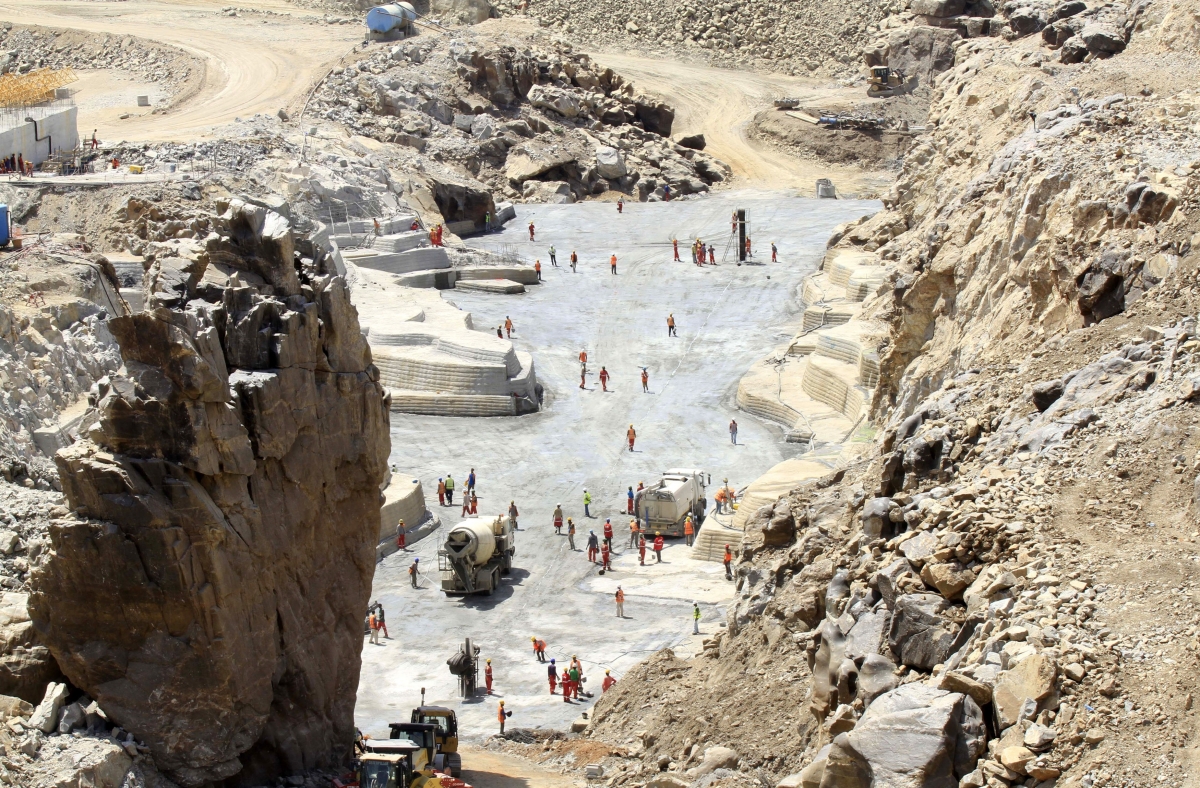
A recent visit of Saudi officials to the construction site of the Grand Ethiopian Renaissance Dam (Gerd), near the Blue Nile River, has further ignited Egypt's grievances over the construction of the dam. Egypt, which is highly dependent on the Nile, has opposed the project, arguing the dam would result in a reduction of water availability in the country, affecting its main source of irrigation.
Following the visit of the Saudi delegation, Egyptian journalists, professors and media personalities publicly condemned the visit, urging Saudi Arabia not to become involved in the construction project.
As the construction works continue, IBTimes UK looks at the development opportunities that the project will bring about, as well as the controversy surrounding the dam, which will be Africa's largest hydroelectric power plant upon completion in 2017.
Africa's powerhouse
The construction of the dam, started in April 2011, is expected to create up to 12,000 jobs. The main contractor of the dam is the Italian company Salini Costruttori.
The entire cost of the project – $5bn (£ 4bn) – is being financed by Ethiopian government bonds and private donations. Gerd is scheduled to be inaugurated in July 2017.
Ethiopia has denied the dam will result in reduction of water supplies to other countries. Addis Ababa maintains Gerd will produce 6,000 megawatts of electricity, making Ethiopia's the powerhouse of Africa, and will create additional water for the downstream countries, Sudan and Egypt.
1929 agreement
Ethiopia's decision to construct the dam challenges a colonial-era agreement, signed in 1929, which gave Egypt and Sudan the biggest shares of the Nile's water. The agreement was renegotiated in 1959 and gave the two countries, respectively, 55.5 billion cubic metres and 18.5 billion cubic metres.
The agreement did not take in consideration the other eight countries – Rwanda, Burundi, Democratic Republic of the Congo (DRC), Tanzania, Kenya, Uganda and Ethiopia – along the river and its basin.
In 1957, Ethiopia officially informed Egypt and the other riparian states that it would pursue its right to use Nile water resources within its territories.
Tensions between Ethiopia and Egypt
In 1980, the then Egypt's President Anwar el-Sadat stated: "If Ethiopia takes any action to block our right to the Nile waters, there will be no alternative for us but to use force. Tampering with the rights of a nation to water is tampering with its life and a decision to go to war on this score is indisputable in the international community."
More than thirty-years later, in 2013, Egyptian politicians were caught on live TV proposing military action to stop the construction of the dam. The remarks were made as Ethiopia had begun work on the project to divert the Blue Nile, causing relations with Egypt to deteriorate.
Environmental impact
The impact the dam will have on the environment is yet unknown.
In September 2016, the Tripartite National Committee (TNC) of Ethiopia, Egypt and Sudan signed a contract with the French consulting company BRLi, which is conducting two studies on the environmental, social and economic impact of the dam.
However, Ethiopia's Minister for Water, Irrigation and Electricity, Mutuma Mikasa said the construction of the dam would continue in spite of the outcome of the studies, due to be published next year.
"This study is about restoring confidence between the three countries," he said. "This power is not only for local consumption, but also for export. We are constructing interconnections to Kenya and from Kenya to Tanzania. We are working with Djibouti, Sudan, and others. This creates regional peace and stability."
Sudan's position
The dam project is largely supported by members of the Nile Basin Initiative (Nib) , an agreement in which parties commit to collaborating and sharing socio-economic benefits deriving from the Nile.
Sudan, the only other country downstream of the Blue Nile, initially expressed concern at the project.
The two downstream nations refused to sign a 2010 treaty in which four east African countries sought more water from the Nile, claiming the treaty violated the 1929 agreement.
Egypt, Ethiopia and Sudan established an International Panel of Experts to review and assess the impact of the dam.
Unlike Egypt, Kharthoum accepted the findings of a preliminary study on the impact, which concluded, in 2013, the project would not negatively impact Sudan and Egypt. Sudan also criticised Egypt for the way it was handling the dispute.
In 2014, Egypt temporary left negotiations over the dam, citing Ethiopian intransigence.
Following a bitter standoff between the two countries, Ethiopia, Egypt and Sudan signed an initial deal to end the dispute over the dam in 2015.
At the time, Egypt's President Abdel Fattah el-Sisi welcomed the deal, but reiterated the construction of the dam was still a source of concern for Egypt.
"The Renaissance Dam project represents a source of development for the millions of Ethiopia's citizens through producing green and sustainable energy," he said. "But for their brothers living on the banks of the Nile in Egypt, and who approximately equal them in numbers, it represents a source of concern and worry. This is because the Nile is their only source of water, in fact their source of life."






